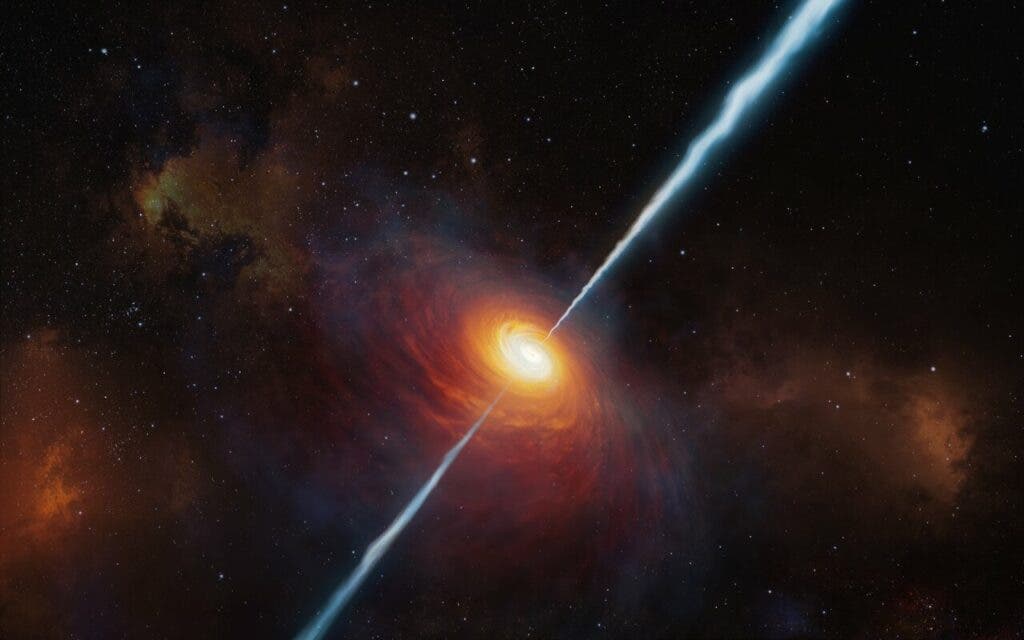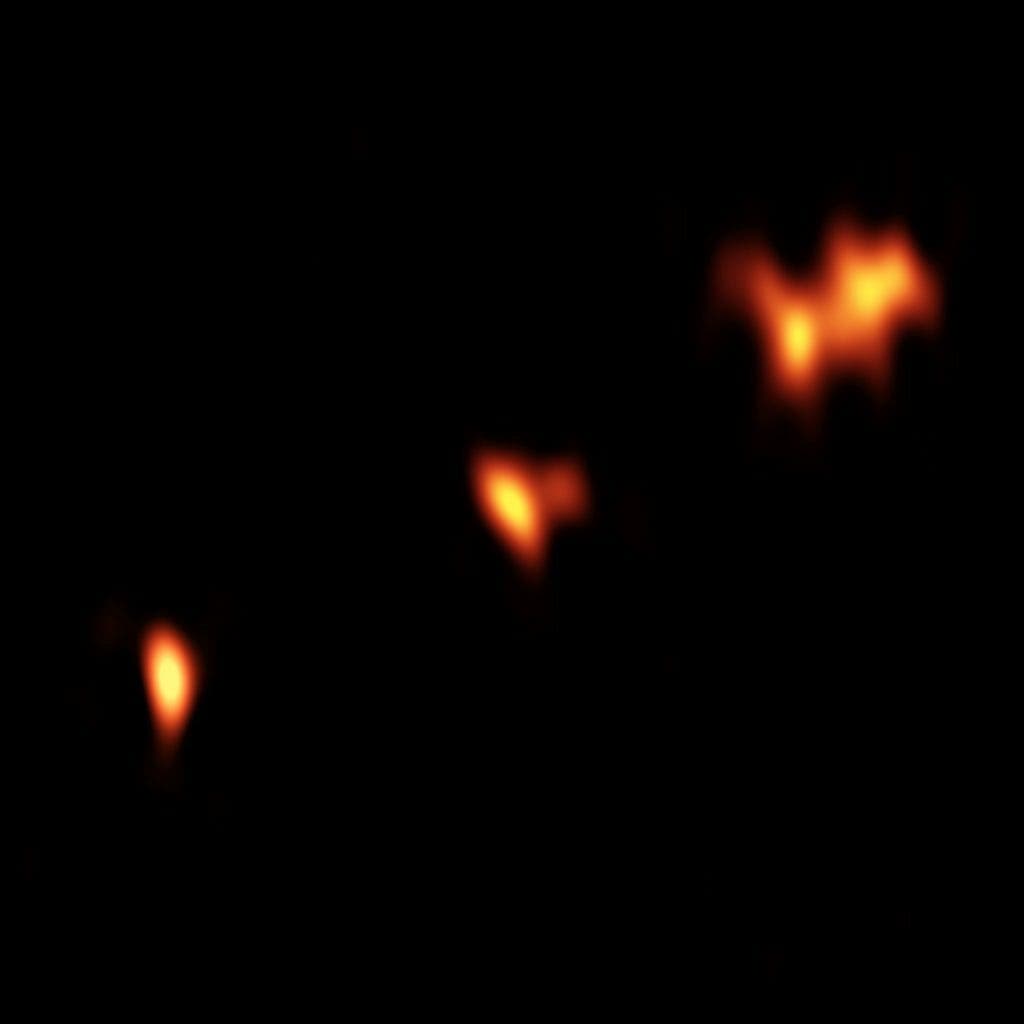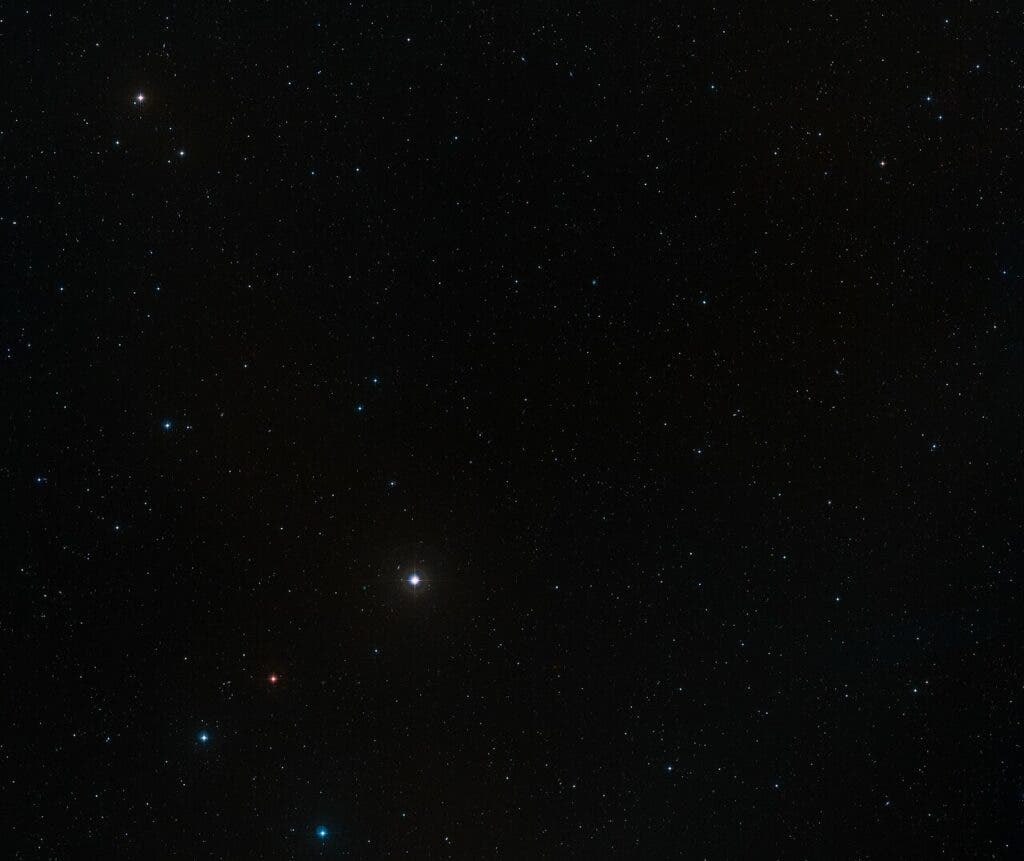With assistance from the ESO’s Very Large Telescope (VLT), astronomers have discovered the most distant radio emission ever recorded. The source is a quasar so distant that its light has been travelling 13 billion years to reach us. That means that it existed when the Universe was just 780 or so million years old.

The object–named P172+18–is what astronomers term a ‘radio loud’ quasar, shining powerfully in the radio-frequency region of the electromagnetic spectrum, extremely bright due to the powerful jets emitted from its axis. Radio loud quasars are fairly rare with only 10% of discovered quasars fitting this description.
This makes the team’s finding even more extraordinary as even though more distant quasars have been found, it marks the first time that researchers have been able to identify the tell-tale signs of powerful radio-bright jets at such incredible cosmic distances.
Excitingly, the team at the centre of this finding believe that this is just the tip of the iceberg with regards to radio-loud quasars, with many more yet to be discovered. Possibly even some at much greater distances.
The team’s discovery is discussed in a paper published in the latest edition of The Astrophysical Journal.
Quasars: Powered By Black Holes
Quasars are objects that lie at the centre of galaxies, powered by supermassive black hole ‘engines.’ The black hole at the heart of P172+18 is a doozy. The team estimate it is around 300 million times the mass of the Sun. As impressive as that is, perhaps more staggering is the rate at which this supermassive black hole is consuming gas and dust.

“The black hole is eating up matter very rapidly, growing in mass at one of the highest rates ever observed,” says Chiara Mazzucchelli, co-leader of the project and an astronomer based at ESO, Chile. “I find it very exciting to discover ‘new’ black holes for the first time, and to provide one more building block to understand the primordial Universe, where we come from, and ultimately ourselves.”
The team believes that the rapid rate of gas consumption displayed by the supermassive black hole and its burgeoning growth are both intrinsically linked to the emission of the radio bright jets they detected. The jets could be disturbing gas in an accretion disc around the black hole, causing it to fall into the central black hole at an accelerated rate.
If this proves to be the case, the study of radio-loud quasars could be of vital importance in the future investigation of the growth of black holes in the infant Universe. There is currently some confusion as to how supermassive black holes could have grown to tremendous sizes over a relatively short-period in cosmic terms, thus a mechanism that accounts for rapid growth is a boon to cosmologists fearing that models of cosmic evolution could need fundamental revision.
Very Loud and Very Far Away
P172+18 was first spotted as a radio source in data gathered by t the Magellan Telescope at Las Campanas Observatory in Chile. Mazzucchelli and team co-leader Eduardo Bañados of the Max Planck Institute for Astronomy, Germany, then assessed the data and quickly concluded that the radio source represented jets produced by a distant radio-loud quasar.
“As soon as we got the data, we inspected it by eye, and we knew immediately that we had discovered the most distant radio-loud quasar known so far,” says Bañados.

Because P172+18 was only observed for a brief period, it was necessary for the duo to follow up the observations with other telescopes. They were able to do this with the use of the X-Shooter instrument associated with the VLT, based in the Atacama Desert, Chile, as well as the National Radio Astronomy Observatory’s Very Large Array (VLA) in New Mexico, and the Keck Telescope located near the summit of Mauna Kea, Hawaii.
These follow-up observations allowed the team to ascertain a wealth of details about the quasar and the supermassive black hole powering it, including its mass and the rapid rate at which it is consuming gas and surrounding matter.
P172+18 may currently hold the record for most distant radio-loud quasar, but it is not a distinction that Mazzucchelli and Bañados think it will hang on to for long. The duo believes that many more radio-loud quasars are lurking in the Universe waiting to be discovered and that undoubtedly, some of these will exist at greater distances than 13 billion light-years.
Whilst these may be a challenge to spot currently, the ESO’s forthcoming Extremely Large Telescope (ELT), currently under construction in Northern Chile, should be powerful enough to handle such observations.
“This discovery makes me optimistic and I believe — and hope — that the distance record will be broken soon,” concludes Bañados.


